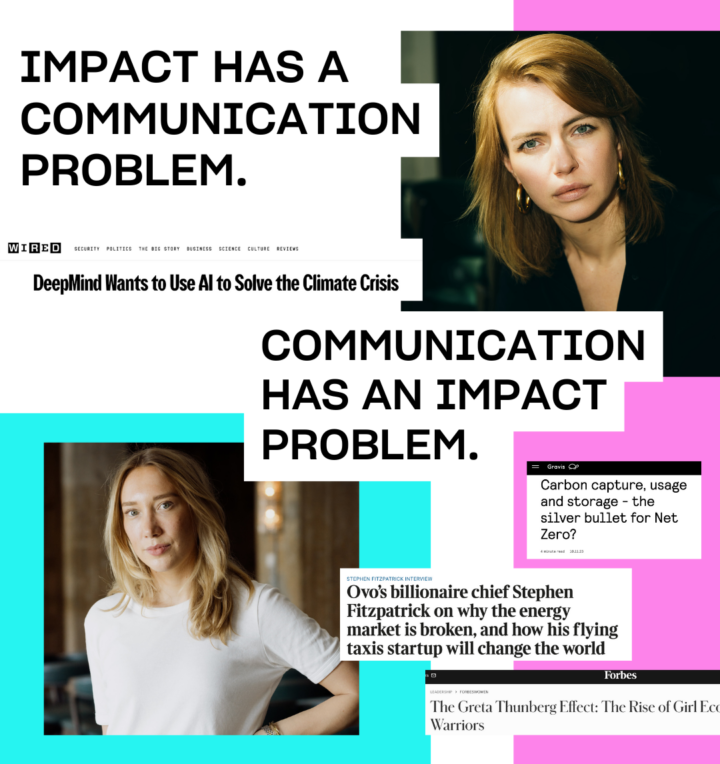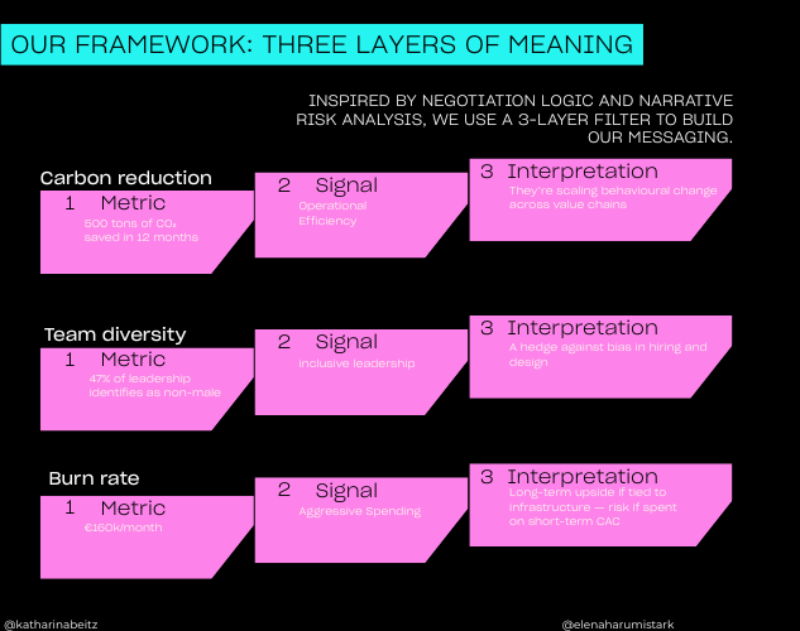Telling the Truth Without Losing the Room – A Framework for Communicating Impact with Clarity and Credibility

Impact has a communication problem.
Communication has an impact problem.
Between the two, something vital is at stake: trust.
At AENU, we spend a lot of time navigating that tension. We’re a climate VC operating in a field where complexity is the norm – and clarity is constantly demanded. On one side, the work of our Impact team resists simplification. On the other, the work of our Communications team depends on accessibility. And often, those two goals are in conflict.
This blog post emerged not from alignment, but from friction – the kind that forces better thinking. Because when impact and communication pull in opposite directions, we’re forced to ask harder questions: What are we really trying to say? Why does it matter? And how do we avoid reducing something essential just to make it legible?
What happens when we get it wrong?
We’ve seen the cost of mismatched communication – internally, in founder conversations, and in how LPs or journalists respond to our work. It shows up in subtle but consequential ways:
-
Impact gets flattened into PR
-
Metrics become signals without substance
-
Storytelling creates expectations that don’t survive scrutiny
In a field where outcomes unfold over decades and evidence is often incomplete, clarity without context becomes dangerous. Trust doesn’t erode because people dislike your message – it erodes because they sense something’s missing.
So what are we actually solving for?
At AENU, we don’t treat communication as a performance tool. We treat it as a strategic risk surface – and a source of leverage. That means we don’t just ask, “Does this sound good?” We ask:
-
Will this survive critical scrutiny?
-
Would we stand by it in a negotiation with an LP or a founder?
-
Are we anchoring our claims in something testable, not just aspirational?
If the answer is no, we rewrite. If the answer is yes, we keep going – and preempt the next-best objection.
Our framework: a 3-layer filter for meaningful communication
Over the past year, we developed an internal system to ensure our messaging holds up under pressure. It’s not about branding. It’s about resilience.
For every impact claim, we move through three deliberate layers:
1. Signal
What immediate association does the number or statement trigger?
→ Example: “47% of leadership identifies as non-male.”
→ Signal: Diversity.
2. Interpretation
What is the intended meaning behind the signal?
→ Interpretation: Inclusive leadership and systemic bias mitigation.
3. Anchor
What backs this up in real-world structures, decisions, or outcomes?
→ Anchor: Hiring data, decision-making roles, promotion history, internal policy.
We’ve applied this framework across our LP materials, founder updates, hiring pages, impact reports, and press outreach. It slows down the process – and strengthens the outcome.

Why this matters now
We operate in a system where trust is fragile, especially in climate and impact capital. LPs are increasingly critical of “ESG theater.” Founders want substance, not storytelling. Journalists have seen enough overclaims to last a lifetime.
That means our role as a fund is not just to make impact happen – but to make it legible, without losing its complexity. And to do so in a way that holds up over time, not just over the next news cycle or fundraising season.
What we’ve learned (so far)
There is no one-size-fits-all impact narrative. But we’ve found a few principles that travel well across stakeholder conversations:
-
Be explicit about trade-offs. Simplification is always tempting. But when we name what’s being left out, we build credibility.
-
Don’t hide limitations. Acknowledging what we can’t prove often strengthens what we can.
-
Expect intelligent skepticism. Write like your audience is smarter than you – because often, they are.
-
Build for interrogation. If your story can’t survive questions, it’s not ready for the public.
What we’re building toward
This post is the first in a series where we’ll unpack how AENU thinks about impact communication in practice – not as a branding exercise, but as an internal discipline.
We’ll share:
-
How we pressure-test claims in LP decks and investment memos
-
What we’ve learned from high-friction founder debates
-
Where communication and impact diverge – and how we manage that divergence
Because if we want the field to evolve, we can’t just raise the bar on capital. We have to raise the bar on language too.
Let’s not just make impact work. Let’s make it legible – without selling it short.